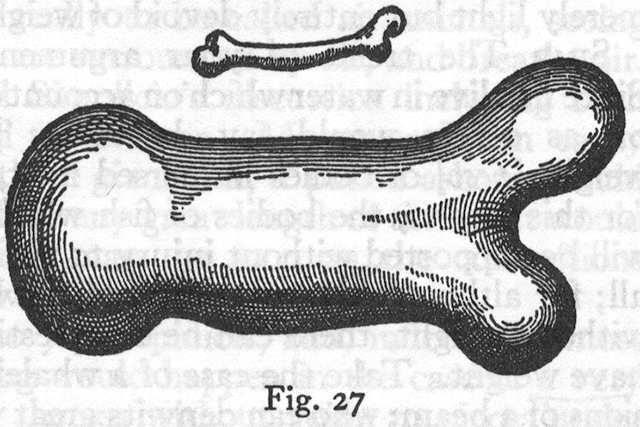The general premise of titular creature in Attack on Titan: Wings of Freedom is that they are humans enlarged and mostly mindless. Some have no skin, making them more gruesome, but that’s not the only thing that makes them different than other being giants. They have an insatiable appetite for humans. And these creatures are the whole reason there were three giant walls created around the city in the game’s lore. They are the whole reason behind the 3D maneuvering gear that I mentioned last week. And if we are honest with ourselves, they are the reason we are interested in the Attack on Titan franchise in the first place.
Many people have already talked about the science of giants, and I will definitely talk about that again because it’s extremely important to understanding the physics behind giants and why certain animals grow as tall as they do and why others don’t. However, my real intent during this week’s article is to answer a different question: How big can a Titan realistically get? So once again, let’s science the shit out of Attack on Titan: Wings of Freedom.

Galileo says
We’ve all heard of Galileo, right. The guy who used to stare at the sky a lot. Well, he was known for more than his astronomy. He was actually a genius mathematician. Moreover, he was an amazing observer. In his book Two New Sciences, he talks about two ships, both are identical in every way. From the mast to deck and from bow to stern, there were no differences save one: One is twice the size of the other. He observes that the larger boat would require more scaffolding and stabilization so that it doesn’t collapse under its own weight.
But that doesn’t makes sense does it? It’s just bigger; it should have the same physical properties as something that is smaller, right? Unfortunately, that assertion is incorrect. On a fundamental level, the atoms in each of the objects are the same, but there are more atoms in the larger item, but on a more practical level, the geometry changes with the larger object.
Imagine a cube that is 1 cm by 1 cm, its volume is 1 cm³ or 1 l, and its mass is about equal to 1 g if filled with water. How much water would a 10 cm cube hold? If you think 10 cm³ or even 100 cm³, you’d be wrong. It would hold 1,000 cm³. Additionally, the mass has tripled proportionately to 1,000 g. This is called Galileo’s Square-Cube Law.
A Titan is human proportions, but standing at about 15 m tall. If the average human stands at about 1.5 m (See where I’m going with this?), then a Titan is 10 times the height. If we round off the average weight of a 1.5 m human to 70 kg. That means that a human-shaped giant 10 times its height would have 1,000 times the mass, 70,000 kg. That’s 70 metric tonnes, by the way. Without any extra support structure, a Titan would be crushed under its own weight, not to mention the strength that it would take to pump that much blood through its system.
On a side note, when you slice a Titan on the back of its neck, it gushes blood. You realize that if your character were to be hit with that stream of bodily fluids, it would be like being hit with a fully opened fire hose.
 How big could a Titan get?
How big could a Titan get?
Galileo said in his book, “Finally, we may say that, for every machine and structure, whether artificial or natural, there is set a necessary limit beyond which neither art nor nature can pass; it is here understood, of course, that the material is the same and the proportion preserved.” In other words, there is a structural limitation to everything. What is the limitations of the human frame? I’m going to stick to the frame and not the circulatory system or any other system like that because of the number of variables involved, but know that many of those thresholds are much lower than the internal structural integrity. We are likely working with the best-case scenario here.
The tallest man to ever live was born in Alton, IL, just a short way from my childhood home in St. Louis. His name was Robert Wadlow. He stood a full 8 foot 11 inches (2.7178 m). Over a meter taller than the average human. And despite being super skinny, he weighed 220 kg, over three times that of an average human. Wadlow even had to wear special braces on his legs to give him extra support for his mass. Unfortunately, Wadlow died at the very young 22 years old due to complications with his height.
Galileo postulated that the bone structure for something that is twice the height of a human would have to be about four times as thick. He even drew a picture of a leg bone. However, there are still issues with using that in a titan when you consider the stress limit of bone, in general.
A human bone has the strength of about 4,400 MN/m², meaning that if the pressure above the bone is more than 4,000 NM it will be crushed. An average human exerts 55 MN/m² standing or 110 MN/m² on his bones when walking, not bad. But a Titan weighing 70 tonnes would put 110,000 MN/m² if we did a simple ratio.
Realistically, a Titan could probably not be much bigger than Wadlow, about 3 meters, but where’s the fun in that? Let me know what you think in the comments, and let me know what happens when you science the shit out of this.







Published: Sep 9, 2016 09:29 am